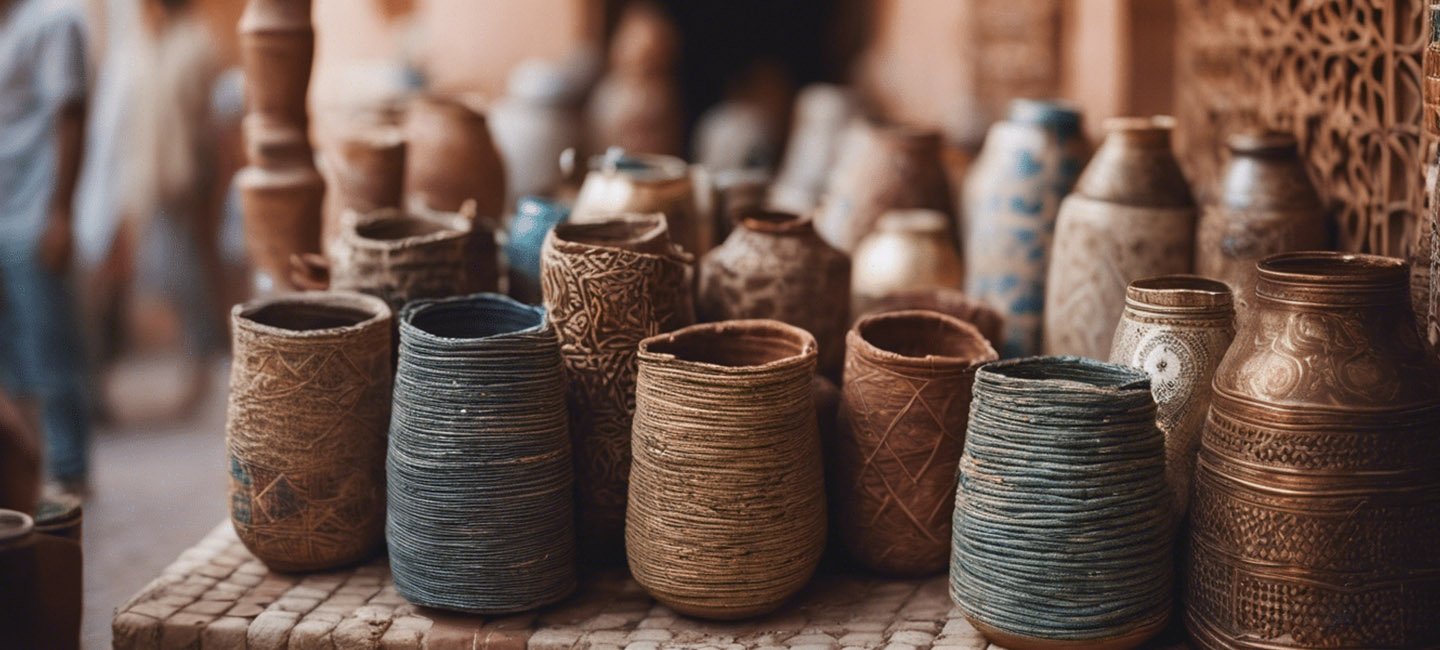In an era dominated by mass production and globalised supply chains, there is a growing appreciation for the uniqueness, authenticity, and craftsmanship inherent in locally made products. From handwoven textiles and pottery to bespoke furniture and artisanal cuisine, local crafts embody the spirit of a place, reflecting the traditions, materials, and techniques passed down through generations. In recent years, there has been a resurgence of interest in rediscovering and revitalising local crafts as a means of promoting cultural heritage, economic development, and environmental sustainability.

Understanding Local Crafts:
Local crafts encompass a wide range of traditional skills, practices, and knowledge systems rooted in specific geographic regions, cultural contexts, and community identities. These crafts may include woodworking, metalworking, ceramics, textiles, basketry, glassblowing, and food preservation, among others. What distinguishes local crafts from mass-produced goods is the emphasis on craftsmanship, attention to detail, and connection to place that imbue each product with a sense of authenticity and cultural significance.

Challenges in Modern Design:
Despite the inherent value of local crafts, traditional artisanal practices face numerous challenges in the modern world. Industrialisation, urbanisation, and globalisation have led to the marginalisation of traditional crafts in favour of mechanised production, standardised designs, and low-cost labour. Moreover, changing consumer preferences, technological innovations, and economic pressures have further threatened the viability of local crafts as viable livelihoods for artisans and makers.

Rediscovering Local Crafts in Modern Design:
In response to these challenges, there has been a growing movement to rediscover, celebrate, and promote local crafts as a source of inspiration, innovation, and cultural pride in modern design. Designers, architects, and entrepreneurs are increasingly incorporating traditional crafts into contemporary products, spaces, and experiences, creating a synergy between past and present, tradition and innovation.
Real-Life Examples:
- The Oaxacan Crafts Revival, Mexico:
Oaxaca, a state in southern Mexico, is renowned for its rich indigenous heritage and vibrant artisanal traditions. From intricate woven textiles and hand-painted ceramics to carved wooden masks and alebrijes (fantastical sculptures), Oaxacan crafts reflect the diverse cultural influences and natural resources of the region. Despite centuries of craftsmanship, Oaxacan artisans faced challenges in sustaining their traditional practices amidst globalisation and economic pressures.

In recent years, there has been a resurgence of interest in Oaxacan crafts driven by a growing appreciation for Indigenous culture, social entrepreneurship, and sustainable tourism. Organisations such as the Instituto Oaxaqueño de las Artesanías (IOA) and Fundación En Vía provide support and training to local artisans, empowering them to preserve and promote their craft traditions while adapting to contemporary markets.

One example of successful collaboration between designers and artisans in Oaxaca is the Mezcaloteca project, which showcases the craftsmanship of mezcal bottles made by local glassblowers. Working in partnership with mezcal producers, designers developed unique bottle designs that reflect the cultural heritage and natural landscapes of Oaxaca, while artisans employed traditional glassblowing techniques to bring these designs to life. The project not only revitalised the local glassblowing industry but also promoted sustainable practices and cultural exchange within the community.
- The Craftsmanship Initiative, Japan:
Japan has a long history of craftsmanship and artisanal excellence, from traditional tea ceremonies and kimono weaving to lacquerware and ceramics. However, in recent decades, Japan’s artisanal traditions have faced challenges from globalisation, demographic shifts, and changing consumer tastes. To revitalise traditional crafts and promote cultural heritage, organisations such as the Craftsmanship Initiative (Takumi Next) have emerged to support artisans, foster innovation, and preserve endangered techniques.

The Craftsmanship Initiative collaborates with artisans, designers, and entrepreneurs to develop new products, markets, and business models that integrate traditional crafts with contemporary design and technology. Through workshops, exhibitions, and educational programs, the initiative seeks to engage the public in the creative process and raise awareness about the value of craftsmanship in a rapidly changing world.

One example of the Craftsmanship Initiative’s work is the revival of Aizu lacquerware, a traditional craft from Fukushima Prefecture known for its intricate designs and durable finish. By partnering with local artisans and design studios, the initiative has introduced innovative techniques and materials to expand the range of Aizu lacquerware products, from tableware and furniture to fashion accessories and digital devices. Moreover, the Craftsmanship Initiative promotes international collaboration and cultural exchange through initiatives such as the Japan House project, which showcases Japanese craftsmanship, design, and culture to a global audience. By fostering connections between artisans and consumers around the world, the initiative helps to sustain traditional crafts while promoting cross-cultural understanding and appreciation.

Rediscovering local crafts in modern design represents a convergence of tradition and innovation, heritage and sustainability, community and creativity. By embracing traditional craftsmanship, designers and consumers can reconnect with the cultural richness, material diversity, and human ingenuity embedded in locally made products. Through partnerships, advocacy, and education, we can ensure that local crafts continue to thrive as symbols of cultural identity, economic vitality, and environmental stewardship in the 21st century and beyond.


